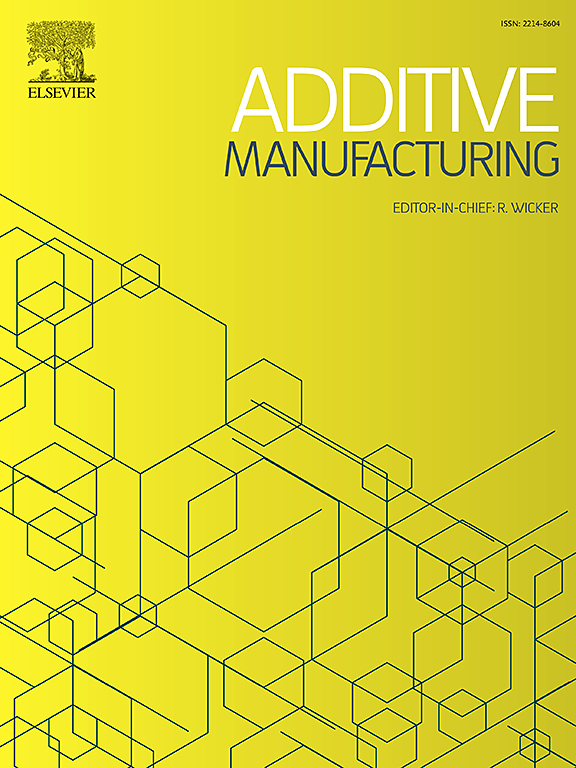高效的基于连续体的聚合物SLS建模和分析:直扫和角扫过程中颗粒烧结和致密化的见解
IF 10.3
1区 工程技术
Q1 ENGINEERING, MANUFACTURING
引用次数: 0
摘要
选择性激光烧结(SLS)是一种广泛应用的增材制造技术,可以生产复杂的聚合物部件。然而,烧结过程涉及复杂的热和材料流相互作用,影响致密化、收缩,从而影响最终零件的质量。本研究提出了一种新的基于连续介质的聚合物SLS数值模型,并通过PA12粉末的实验研究进行了验证。该模型捕获了关键的烧结特性,包括热积累、粉末收缩和致密化,而计算成本只是传统离散元法(DEM)方法的一小部分。本研究的一个关键发现是在尖角处发现了过度聚焦效应,在尖角处,热量积累导致链宽度增加和意想不到的材料重新分配,这是一种在以前的文献中没有报道过的效应。实验验证与数值预测结果吻合较好。然而,在尖角处的链厚偏差表明,毛细管驱动的熔体再分布可能起作用,如果不诉诸更密集的计算粒子级模型,就无法捕捉到这一点。这项工作证明了基于连续体的建模在保持计算效率的同时预测SLS烧结行为的潜力。该模型为探索工艺参数和优化打印路径策略提供了有价值的工具,最终有助于聚合物SLS的工业化。本文章由计算机程序翻译,如有差异,请以英文原文为准。
Efficient continuum-based modelling and analysis of polymer SLS: Insights into particle sintering and densification in straight and corner scanning passes
Selective Laser Sintering (SLS) is a widely used additive manufacturing technique that enables the production of complex polymer components. However, the sintering process involves complex thermal and material flow interactions that influence densification, shrinkage, and hence final part quality. This study presents a novel continuum-based numerical model for polymer SLS, validated through experimental investigations using PA12 powder. The model captures key sintering characteristics, including heat accumulation, powder shrinkage, and densification, at a fraction of the computational cost of traditional Discrete Element Method (DEM) approaches. A key finding of this study is the identification of oversintering effects at sharp corners, where heat accumulation leads to increased strand width and unexpected material redistribution—an effect not previously reported in the literature. Experimental validation confirmed good agreement with numerical predictions. However, deviations in strand thickness at sharp corners suggest that capillary-driven melt redistribution may play a role, which cannot be captured without resorting to more computationally intensive particle-level models. This work demonstrates the potential of continuum-based modelling for predicting sintering behaviour in SLS while maintaining computational efficiency. The model offers a valuable tool for exploring process parameters and optimising print path strategies, ultimately contributing to industrialisation of polymer SLS.
求助全文
通过发布文献求助,成功后即可免费获取论文全文。
去求助
来源期刊

Additive manufacturing
Materials Science-General Materials Science
CiteScore
19.80
自引率
12.70%
发文量
648
审稿时长
35 days
期刊介绍:
Additive Manufacturing stands as a peer-reviewed journal dedicated to delivering high-quality research papers and reviews in the field of additive manufacturing, serving both academia and industry leaders. The journal's objective is to recognize the innovative essence of additive manufacturing and its diverse applications, providing a comprehensive overview of current developments and future prospects.
The transformative potential of additive manufacturing technologies in product design and manufacturing is poised to disrupt traditional approaches. In response to this paradigm shift, a distinctive and comprehensive publication outlet was essential. Additive Manufacturing fulfills this need, offering a platform for engineers, materials scientists, and practitioners across academia and various industries to document and share innovations in these evolving technologies.
 求助内容:
求助内容: 应助结果提醒方式:
应助结果提醒方式:


